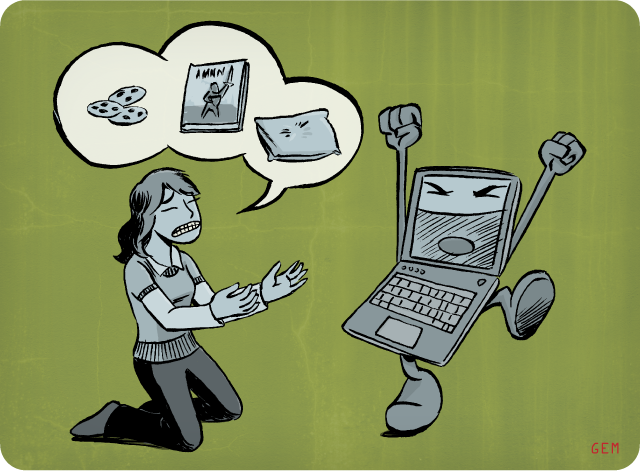-
-
products
-
resources
-
support
-
company
-
Why do I Need Drivers on my PC?
By Steve Horton December 22, 2011Driver Reviver, Drivers, guest blog, rantz hoseleyNo Comments
Rantz Hoseley
Console gamer or PC gamer? I used to ONLY play games on PC, but the majority of my gaming time is now spent on Xbox. The growth of genres and different forms of entertainment (Netflix, Vudu, UFC, Hulu, TMZ, lastFM, etc, etc) on the Xbox has pretty much ensured that no matter what I am in the mood for, I can get it there without worrying about “can my video card handle this?”
Do you think LED lighting in monitors justifies the extra price? Not at all. Especially since those same features will be considered “core” functionality in sub-$200 monitors within the year.
Would you ever buy a solid-state drive? Yep, already have for both my desktop systems, and for my ‘portable’ drives that I use to shuttle material from home to the office, or to demos. I’ve had enough disk errors and reformatting issues with disk drives that I’m very happy to see the rise of affordable, and high capacity, SSDs.
Rantz Hoseley has been working in the world of telling stories, through comics, prose, and videogames, for over 25 years working on brands such as Star Trek and Disney’s Aladdin. He’s currently forging new territories in the world of digital narratives with his company LongBox, Inc.
Q. Why do I Need Drivers on my PC?
A. Drivers are an integral part of your computing experience, and one that you usually do not pay attention to. That is until your computer screams and caterwauls at you like a child who did not receive the latest videogame installment of the Masters of Magical Oblivion Worlds. Like said child, your computer will also display the behavior of freezing up and refusing to do anything you want it to do, and unlike dealing with an unhappy child, Gramma Bernie’s triple-chocolate fudge provides no solution to your problem.
That is what I am here for. (The computer drivers issue, that is. Sorry, you’re on your own with the kids. Good luck.)
Illustration: Gordon McAlpin Drivers are those little apps that make sure that external digital devices, (such as cameras, eReaders and the like) additional computer hardware (from Blu-ray players to folding wireless mice), and installed software (in both the “productivity” and “leisure” categories) operates smoothly with your computer hardware and operating system. Drivers are frequently updated… this can be for a multitude of reasons. Security improvements, new standards in hardware, and increasing performance and stability are among the top motivators for a company to release a new version of a driver.
Further complicating the issue is the little fact that every company has its own protocols and criteria for when and why they release new drivers. Most companies will release new drivers when there is an identified bug… something that is causing users significant grief and hampering their usability experience. However, many companies will release “annual updates” that incrementally improve performance and address small issues that accumulate (such as support of new computer features). Then there are the “fidgety” companies. These are the companies that seem to have a new driver release Every. Time. You. Log. On. This is generally held as “bad practice” for releasing drivers because it alienates and annoys customers and has the cumulative effect of creating a negative perception towards the importance of downloading and installing new drivers. If you’ve used a PC for longer than a year, odds are high you’ve encountered drivers in this last category. Knowing that, I cannot stress this enough… do not let these experiences affect your perception of the importance of updating drivers. Seriously.
In order to keep your life from being dedicated to driver updates, here are a handful of guidelines and rules that, if followed, will make your computer life much easier and hassle-free.
Backups
I talked in my last blog for ReviverSoft about the importance of backups, and that extends to drivers, with a big sharpie marker underlining and circling it.
On my hard drive, I have a “Downloads” directory, and within that, a “Drivers” directory, which is broken up with sub-directories by category …“Hardware”, “Apps”, “Video”, etc… with further sub categories by specific application or device. So, within “Apps” I have directories for “Adobe”, “Microsoft”, “Google”, and more. This may seem like I’m a bit on the OCD-anal-retentive side, but there is a reason for this. I, my friends, am lazy. If my computer goes down due to a power surge, hardware failure, or because the cat knocked over my coffee onto the system, I do not want to spend the next two days hunting down drivers, and then being annoyed mid-work because… no, I did not install all the drivers that I thought I needed. By having all of the current (and installed, we’ll come back to this…) drivers organized in a directory, I can simply copy that directory to CD, DVD, or flash drive whenever I add a new driver, which ensures that I don’t have the stress of trying to find a driver for my wireless network adapter without being able to go to the website to download it.
Current Drivers
The drivers you need to “worry” about, or take an active interest in (since they are very unlikely to have a “new driver available” notification) are the ones related to hardware and devices you’ve added to your computer. Video cards, audio cards, CD/DVD/Blu-ray drives, Ethernet cards, and the like are the culprits most likely to give you “trouble” when it comes to needing to be aware of “unannounced” driver updates. To make this easy, I set up a “check drivers” event on my Outlook calendar on four different dates throughout the year. The event reminder has a list of the hardware drivers that I need to check, as well as the URLs for each of the drivers. This takes a little time to set up initially, but it removes any mental resistance to taking care of it and staying on top of it, since all I have to do is click the links, check that I have the newest version, and move on.
BETA Drivers
In software development, we used to jokingly refer to “Beta” as an acronym for “Bug and Error Triggering Application.” Nowadays, most beta software and drivers are much more stable, and tend to be relatively “safe”. That said, you need to ask yourself two critical questions prior to installing any beta drivers.
- Is my current experience with this application/hardware/device bad enough that ANYTHING is better than what I am currently being subjected to?
- Can I afford the time and effort of possibly being without my computer for 2 or more days?
If you have answered “yes” to both, then it’s “worth the risk,” but that is the only condition I’d recommend installing beta drivers. After all, you are a productivity machine, not a guinea pig. Your maintenance (and choice) of drivers should reflect that focus.
Was this post helpful?YesNoFree Driver Updates
Update your drivers in less than 2 minutes to enjoy better PC performance - Free.
Free Driver Updates
Update your drivers in less than 2 minutes to enjoy better
PC performance - Free.
Didn't find your answer?Ask a question to our community of experts from around the world and receive an answer in no time at all.most relevant recent articles Pin It on Pinterest
